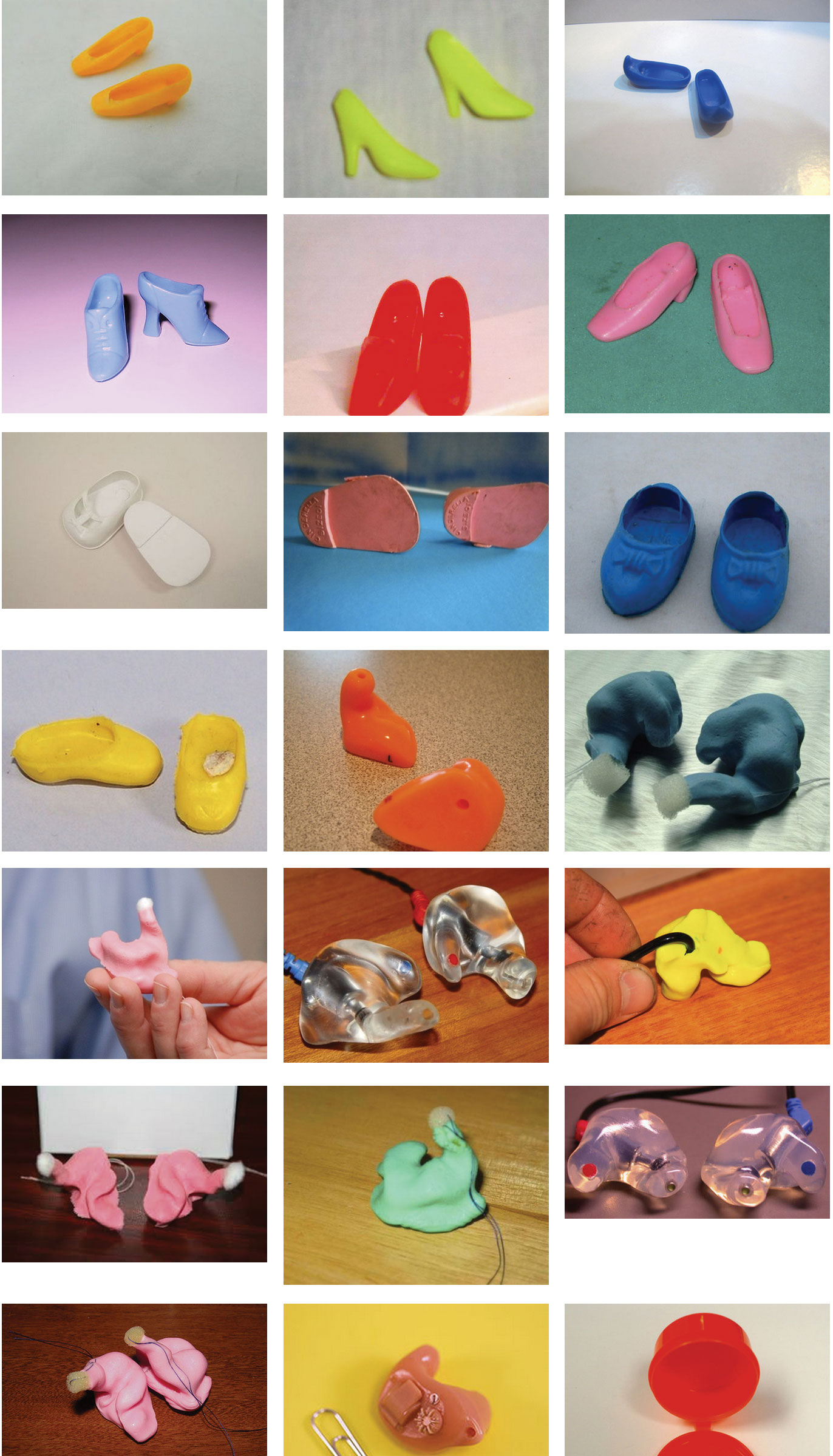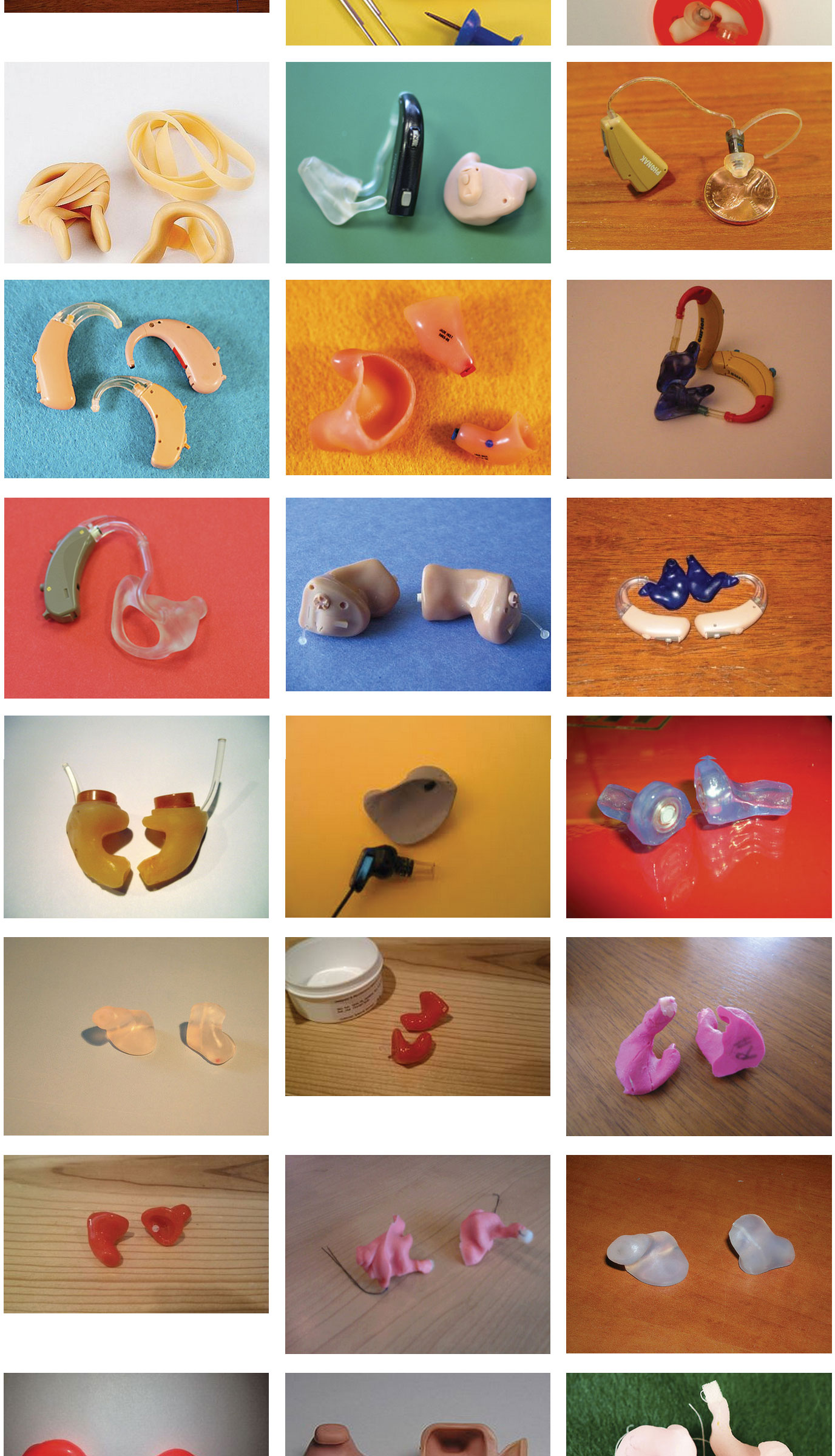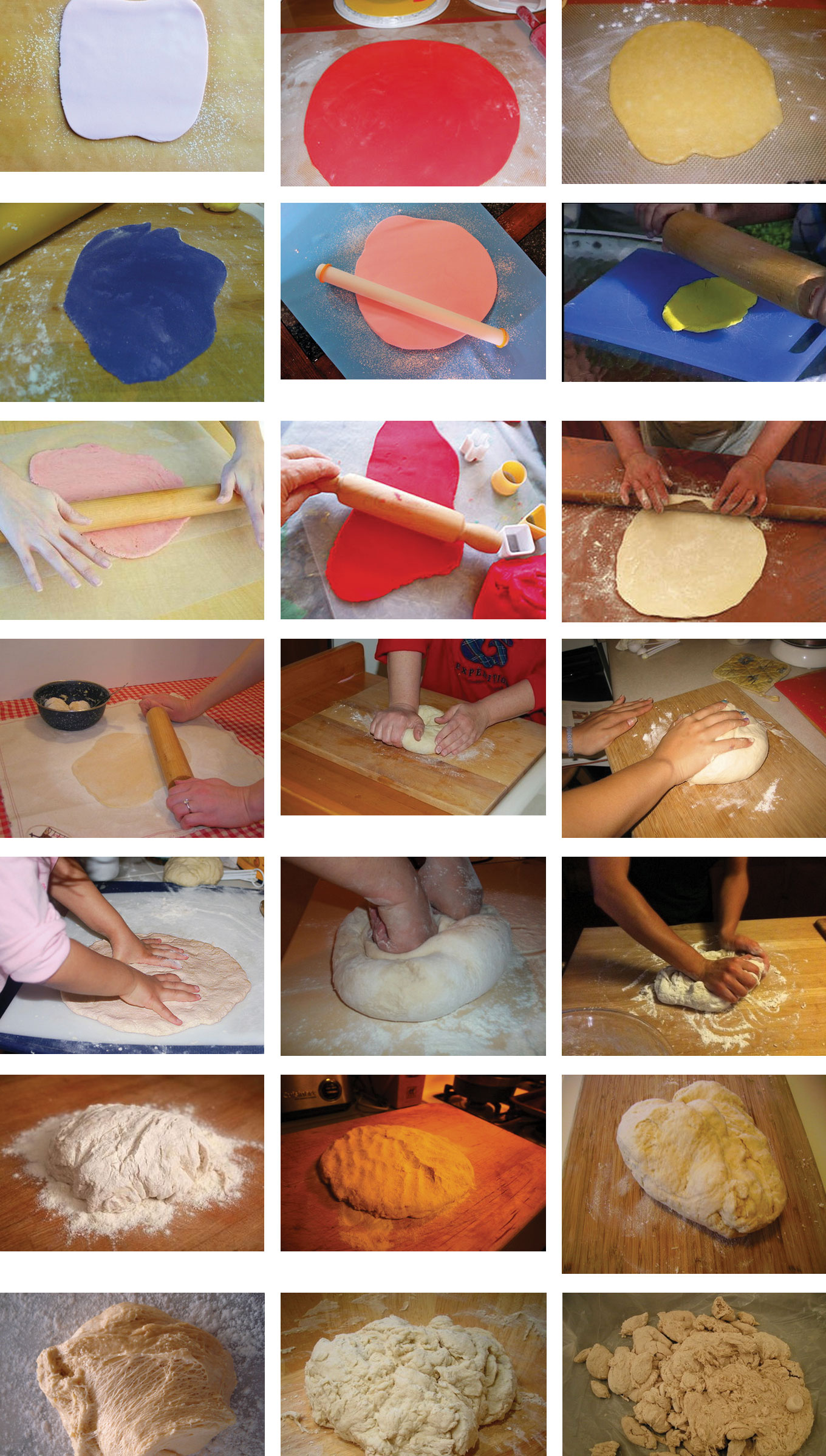Editor’s note: The following text was written by Stephanie Barber, the inaugural ART21 + CUE Writing Fellow, in conjunction with Dina Kelberman: What Is In It, on view at CUE Art Foundation September 6–October 18, 2014. Barber’s text is included in the free exhibition catalogue, which is available at CUE and here online.

Dina Kelberman. I’m Google, 2011–ongoing. Tumblr blog of found images and videos. Courtesy the artist. https://dinakelberman.tumblr.com.
Smoke becomes fibers and fibers become wood and wood wood packaged and packages packed packages which become buckets which sit on bleachers which surround stadiums which call to grass which calls to painted lawns of chemical colors and turn romantic in the night.
Things become other things and for a short while echo themselves as if trying to ‘get it right.’
What a thing really is is both what it had been (the tree before the wood slats which made the wooden bench) what it could be (the fire caused by the bench’s sad encounter with a cigarette) and what it is not (a roll of pink plastic sheeting). And what a thing is may also be, in Kelberman’s hands, what it might be resonant with (through hue or form or proximity allusive).
Through these varied resonances she is putting the Internet in order.
You can almost hear her frustrated sigh as she, with an obsessive’s swift mouse move, puts the images in the right place. Heretofore untethered, without kin, in the terrifying ether of collective experience, the images breathe a different sigh.
This organizing of the Internet brings to mind Rob Fitterman’s recent organization of some of the internet’s sentences which construct his book No, Wait, Yep. Definitely Still Hate Myself.
The question of sentences organized and reorganized brings to mind Lola Pierson’s recent adaptation of the Peter Handke play Kaspar.
Kelberman’s adaptation is simply placement. Perusal and placement.
Kelberman’s humor is simply placement. Perusal and placement.
Humor is simply reference. Digital hoarder humor.
Kelberman’s piece I’m Google (2011-ongoing) suggests that everything is a reference to everything else and the reference and reverence of such obsession is our modern appetite for both documentation and endless checking in on others’ documentation.
Reference too, is being referenced.
So much of I’m Google points not only to the objects and actions featured in Kelberman’s image choices but the act of referencing, the act of rhyming, that the Internet engages in, the algorithms of consumer culture. The cloying phrase “you might also enjoy” is here mocked through sheer implicatory endlessness.
What might we enjoy?
We might enjoy the “ah-ha” moments we imagine Kelberman to have experienced when coming upon just the right image to move from one pictorial thought-run to the next. A chess-like mastery as she places the offering that will change the direction of the game.
We might enjoy some simple wonders such as learning that sometimes people wrap their homes in brightly colored plastic.
We might enjoy contemplating the concept of learning through images alone. A learning and understanding that sidesteps language and by appealing to our senses feels more immediate and actual. Incomplete and suppositional.
Søren Kierkegaard’s suggestion that to understand the concrete one must abandon abstraction (let’s say image and language respectively). Though, one of the things Kelberman has done is change the meaning of these images.
And, like Ludwig Wittgenstein’s concept of “language games[,]” this linguistic (imagistic) lability lays bare the structure of the device. The structure of Google and the structure of Kelberman’s game.
Context is concept. And vice versa. And versa and versa ad infinitum like the Music of the Spheres. Musica Universalis. The music of proportional balance and order which serenades our cosmos.

Dina Kelberman. I’m Google, 2011–ongoing. Tumblr blog of found images and videos. Courtesy the artist. https://dinakelberman.tumblr.com.
Scrolling through I’m Google feels very much like the experience of listening to a piece of music. Falling deeply into a phrase or movement and then, for a moment, losing your focus to come back and wonder “how did I get here?” as your toes dig deeply into plush carpet.
I am thinking right now about Harry Partch’s composition Barstow. For the “libretto” Partch collected hitchhiker inscriptions. The “how did I get here” becoming spatialized through the snippets of narrative and set against the abstract, conceptual music.
Kelberman plays with concepts (potholders, say) for a short or longer while, a staccato or legato pacing. Sometimes a coda brings a run back around. Like music or poetry I’m Google unfurls itself through time. Ideas are played with for a while and subtly or jarringly transition to other ideas.
These transitions are where the real magic of the piece is. The leaps are delicate and expected (like a hand painted orange to an orange glove) and unexpected (like doll shoes to hearing aids). Perfect and allegorical.
The real magic is not contained in any one element of the piece. That’s why it is real magic.
Kelberman has simultaneously compressed and expanded these images’ potential. An impressive sleight of hand.
The plastic bag filled with orange gel moves from the narrative of its origin to the narrative of Kelberman’s poem. The potential for transcendence in the life of any object is almost painful. The way it pokes at our own objecthood. Our own oppressive potential.
The daunting bounty of existences which the Internet suggests possible and the oppressive realization that our personal narratives are limited.
The daunting recognition that this fractalized Internet is our collective human narrative.
The gentle curve and comfort of the word “narrative,” so like the crook of an arm.

Dina Kelberman. I’m Google, 2011–ongoing. Tumblr blog of found images and videos. Courtesy the artist. https://dinakelberman.tumblr.com.
The use of the word “I’m” in Kelberman’s title simultaneously biographical and autobiographical.
Or, much like The Autobiography of Alice B. Toklas, through which we come to know Gertrude Stein, Kelberman, while writing the ostensible story of the Internet, has told her own story.
I would like to skip any reference to the spectacle’s hand in autobiography.
Imagine Guy Debord’s hands resting patiently upon a table.
There are so many people’s hands in these images.
Whole people, though, are used carefully. Sparsely.
People are used either as objects (crowds of people with the same color clothes) or accoutrements to an action (welders are present but the welding spark is the activator of the image and the change it will precipitate) (ditto the sand hole dwellers, the balloon blowers, the fire starters, cart wheelers and rope danglers).
But people are so present as they must always be.
Why must the people always be so present?
Leon Battista Alberti is so present (as he must always be). His reference, in On Painting, to Narcissus as regards the human desire to create art, stares grimly in our direction.
Also the fenestrae caeli.
The heavens being our human impulse to document, save, share and the window Kelberman’s formatting.
Kelberman’s formatting and the Internet itself. So many windows.
And though so much can be thought here about appropriation and the frenzy of ownership (concrete and abstract ownership) there is, in I’m Google, very little real appropriating going on. Kelberman allows for each image to be traceable to its original “place” in the Internet. An expansive and inclusive gesture.
We float along the linearity and stream of consciousness with our eyes listening hard for the stasis and changes; codas and revelations; patterns and disruptions.
We believe each pattern or disruption to be a clue to be employed in the deciphering of actuality.
Manuel De Landa, in thinking about Gilles Deleuze and the notion of essences wrote: “actualization or differentiation is always a genuine creation.”
Essences are so apt here. Deleuze’s essences, Plato’s essences. The essence of Kelberman’s piece is the essence of the image. Merely that what a thing is is this desire to represent what a thing is.
Is the is desire?
The poetics of desire are reified by repetition.
The repetition itself a statement about history. History and desire pointing easily to Susan Sontag and just what she has to say about photographs.
The way that photographs develop our sense of history, our character, our national character.
Character development here is crafted by, not looking in or at the character, but rather from the character. We come to know Kelberman through her choices, her attractions, her humor. Her compositional and chromatic leanings which are as clear and direct as the aesthetics upon which they are built.
Bowerbirds building bowers.
This building and cataloging of our personal and collective narratives through rhyming visuals, like the songlines created through the dreaming, will help us find our way. Back.
Oh, there is only so much light that can be brought to bear witness to our desire to see our lives and environs reflected back to us. Our frenzy for simultaneously realistic and transcendent mimesis is anthemic.
REFERENCED WORKS
Alberti, Leon Battista. Della Pittura, 1943.
De Landa, Manuel. “Deleuze, Diagrams, And The Genesis Of Form,” American Studies, Vol. 45, No. 1, 2000.
Fitterman, Robert. No, Wait Yep. Definitely Still Hate Myself. New York: Ugly Duckling Presse, 2014.
Kaspar (1967), by Handke, Peter. Dir. Pierson, Lola. The Acme Corporation, Baltimore. June 5th – 20th, 2014.
Kierkegaard, Søren. Either/Or, 1843.
Partch, Harry. Barstow, 1968.
Stein, Getrude. The Autobiography Of Alice B. Toklas, 1933.
Wittgenstein, Ludwig. Philosophical Investigations, 1953.
The ART21 + CUE Writing Fellowship provides each writer with a mentor—an established art critic appointed by the International Association of Art Critics USA Mentoring Committee. Barber worked with Barbara A. MacAdam, deputy editor of ARTnews.




Pingback: Negative Jam Positive Jams » September 5th, 2014 - Negative Jam
Pingback: Tour semanal pela internet: 6 de Setembro
Pingback: An Artist-in-Residence at a 19th Century Library: Lu Zhang